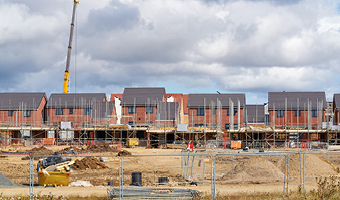Understanding what makes town centres and high streets successful is the first step towards solving many of the issues that they face. However, the majority of our town centres and high streets have incredibly fragmented and complex ownership structures so without a clear understanding of the various stakeholders, and their roles and responsibilities in the regeneration process, it will be impossible to effect change.
In the second instalment in our Roadmap to Recovery Guide, a series of expert opinion pieces setting out our approach for revitalising our town centres and high streets over the short, medium and long-term, we ask the question “How do we achieve success?”.
Successful and resilient town centres and high streets of the future will therefore need to have:
LEADERSHIP & GOVERNANCE
If experience teaches us anything it is that successful regeneration will not happen without a combination of strong and dynamic leadership. Leadership can come in many forms. It could be driven by one individual (such as the Chief Executive or Officer in a local authority, or by a BID or Town Centre Manager), or it could come from a group of stakeholders (including community and business leaders) who have a vested interest in the regeneration and transformation of their towns and high streets. Local authorities will, more than ever, need to take a greater role as influencers, enablers and deliverers of centre and high street transformation. Firstly, because they have a duty of care to their communities and businesses to grow the economic, social and environmental benefits of towns; and secondly they have wide-ranging powers that can help achieve transformation, ranging from planning and compulsory purchase powers, to ownership and funding options. However this will vary from place to place depending on the level of in-house expertise and resources available, alongside the impact of long terms cuts to local authority budgets and the impact of the COVID-19 pandemic on resources.
PARTNERSHIPS & ENGAGEMENT
“There is no logic that can be superimposed on the city; people make it, and it is to them, not buildings, that we must fit our plans” (Jane Jacobs, Downtown is for People (April 1958. Fortune Magazine)
Strong leadership is all about listening, collaborating and creating strong partnerships to help discuss, shape and deliver transformative change. Everyone should have a voice. Engagement and collaboration with the community, businesses and other key stakeholders is critical to success. The best vehicles are place-partnerships and these can take many forms: from informal associations to more formal organisations such as Business Improvement Districts (BIDs) or Town Boards. Through strong governance, partnerships and collaborations it should be easier to build consensus and navigate the myriad of challenges that lie ahead.
Cross-party support will be vital to ensuring the joined-up and long-term planning and delivery of projects. Cross-border collaboration between local authorities is also vital to help understand and test the wider complementary benefits and impacts of new town centre regeneration.
EVIDENCE
Building a robust evidence base is key to the creation of successful visions and deliverable strategies. There are many inter-related approaches and datasets that together provide powerful key performance indicators that can inform the past, current and future performance of centres. These include:
• Health Checks
• Footfall Counts
• Customer & Catchment Profiling
• GAP Analysis
• Market research surveys
• Capacity and Needs Assessments
• Competition and Benchmarking Appraisals
• Turnover and Rental Forecasts
• Marketing Testing
Analysing and making connections between the different key performance indicators is key to preparing a robust and meaningful evidence base. Commercial realism needs to be applied to decision making to ensure that the appropriate scale and quality of space is delivered to meet wider demand for offices, housing and leisure.
Towns need to understand what role and function they are playing, not just in their local catchment but also how they relate to other centres and locations. The question around whether the retail and leisure offer matches the centre’s catchment demographic and socio-economic profile also needs to be asked. If the tenant profile is geared to a lower order demographic but the catchment has pockets of affluence, for example, then the town could be missing out on the potential to capture high spending consumers.
VISION
The next step is to set a clear and bold vision or mission statement for your town and place. The visioning process should not be carried out in splendid isolation. It requires effective engagement between local authorities and key stakeholders, including the community, local businesses and landowners to ensure the vision meets wider needs and has positive economic, commercial, social and environmental impacts. This early collaboration and capacity building, based around strong leadership and robust evidence, will help with the delivery of the vision.
STRATEGY
Every place will need a flexible, living and breathing strategy that can articulate, illustrate and test the vision. The strategy can take different forms depending on local circumstances, needs and budgetary constraints. The options include more formal masterplans, area action plans, neighbourhood plans and development/ regeneration frameworks that are generally more resource-intensive and expensive as a result, but can also provide greater planning certainty where they form part of the suite of development plan documents. Alternatively an investment/development prospectus offers a more flexible and cost-effective option to articulate the vision, market the town and showcase key projects to potential investors, developers and funding partners. Whatever form it takes the strategy should provide a robust commercially tested “road map” to future delivery and funding of key projects and initiatives over the short, medium and long term that build on the local (unique) characteristics, strengths, offer, culture, heritage and communities of our towns and high streets.
NEXT STEPS
The final instalment in our Roadmap to Recovery Guide series will look at the key components for achieving success.View the first instalment in our Roadmap to Recovery Guide series ‘Qualifying Success’.
For more information or advice about how we can help with planning, funding and delivering successful and resilient town centres and high streets of the future please get in touch or visit our Planning, Development and Regeneration web page.
Get in touch

Email me direct
To:
REGISTER FOR UPDATES
Get the latest insight, event invites and commercial properties by email









